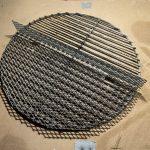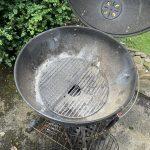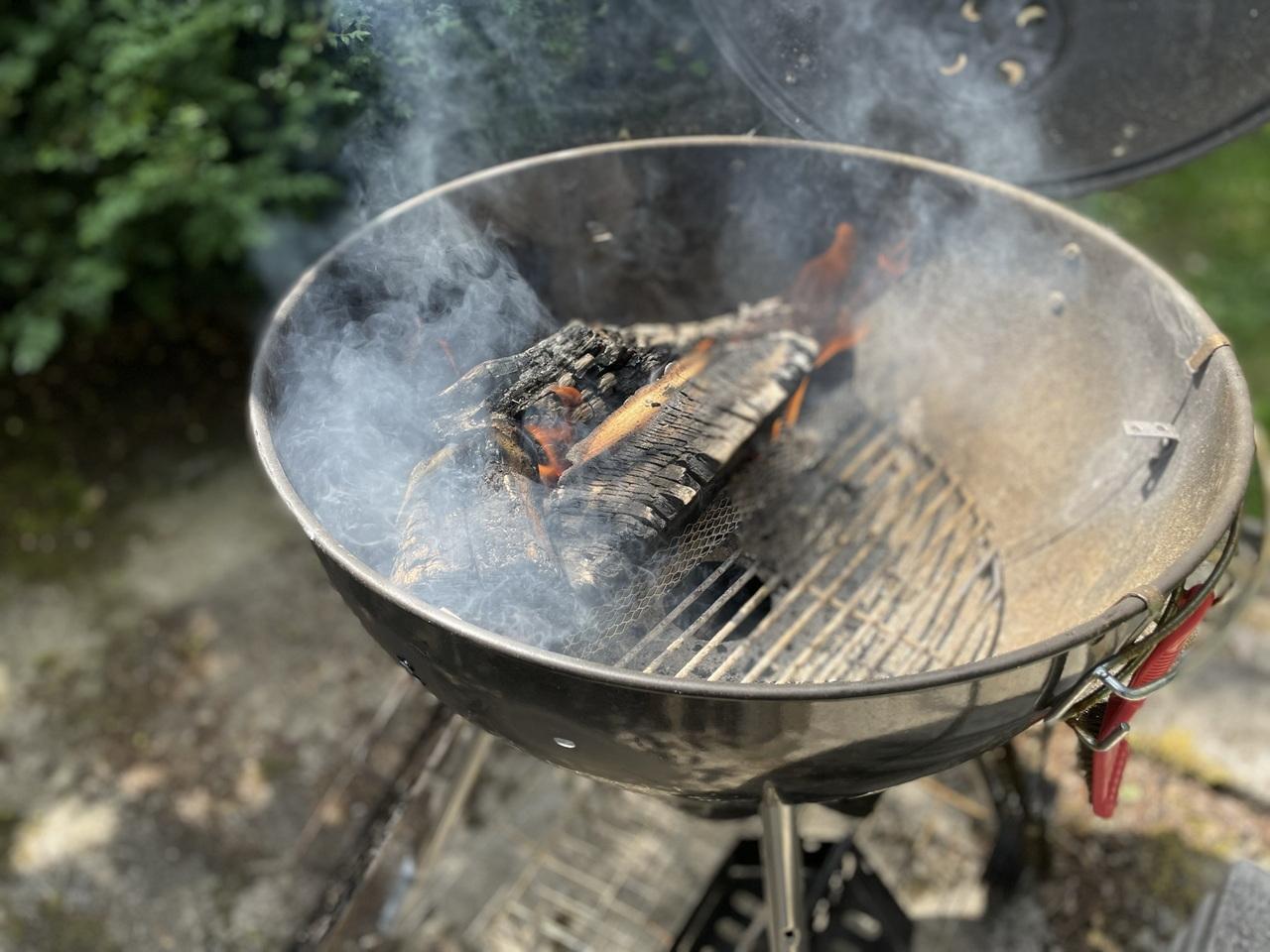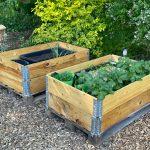Unfortunately, we had to fell five of the many oak trees on our property over the last two and a half years (for various and indeed sensible reasons) – this wood is still stocked here in the garden, drying and waiting for being used worthwile.
Now I read an article from someone that I really deem a “grill master” these days and he stated that solid and reasonable firewood is a more beneficial BBQ fuel than every store-bought coal or briquettes available. Light it up, let it generate glowing embers and use it to grill. So far so good, cooking meat over burning wood is not so much of a recent idea in human history, right?
I want to do this!


 Especially, because when I was young this was the usual way to grill food over our campfires and secondly, because I have an abundance of reasonable firewood lying around here just waiting for use. So, how to use firewood instead of coals in a common commercial kettle barbecue grill?
Especially, because when I was young this was the usual way to grill food over our campfires and secondly, because I have an abundance of reasonable firewood lying around here just waiting for use. So, how to use firewood instead of coals in a common commercial kettle barbecue grill?
I found that firewood can result in more brittle, small-sized glowing embers and fragments than coal or even briquettes do since it has to be handled more. So I wanted to prevent them to fall through the fire grate and tumbling down the grate into utter uselessness.
Solution: A grate with a narrower mesh in order to keep all the glowing goodness in place more or less. I divided the space into a “hot zone” and a “cool zone” for indirect grilling. Manufacturing time ~ 5 mins., easy, low cost and a no-brainer. Here it is.
Grilling experience:
Oakwood is deemed to be great firewood for it’s hardness and density and this also applies when it comes to grilling with it. It delivers great heat and it’s very long lasting – much better than lump charcoal from the store. It needs a little more time to “burn through” and generate embers than coal but it definitely works in the grill, just make sure it’s dry.
But the main thing is: Aside from the boring discussion about what’s better for grilling, gas or coal, the real game changer is decent firewood. Tested with a neutral, unseasoned piece of meat, I can say that it does indeed make a huge difference in taste. It’s much more smoky, aromatic and kind of “earthy” – very tasty!
Lessons learned:
I used some large chunks of the above mentioned oak wood which was not optimal (this is not a campfire). Parts of the wood did not even burn yet while others were already falling apart, resulting in a very uneven bed of embers that made it difficult to grill meats evenly without constantly watching closely. Next time I’m just going to use a little smaller, thinner pieces of wood for a more uniform source of heat, that’s all.

